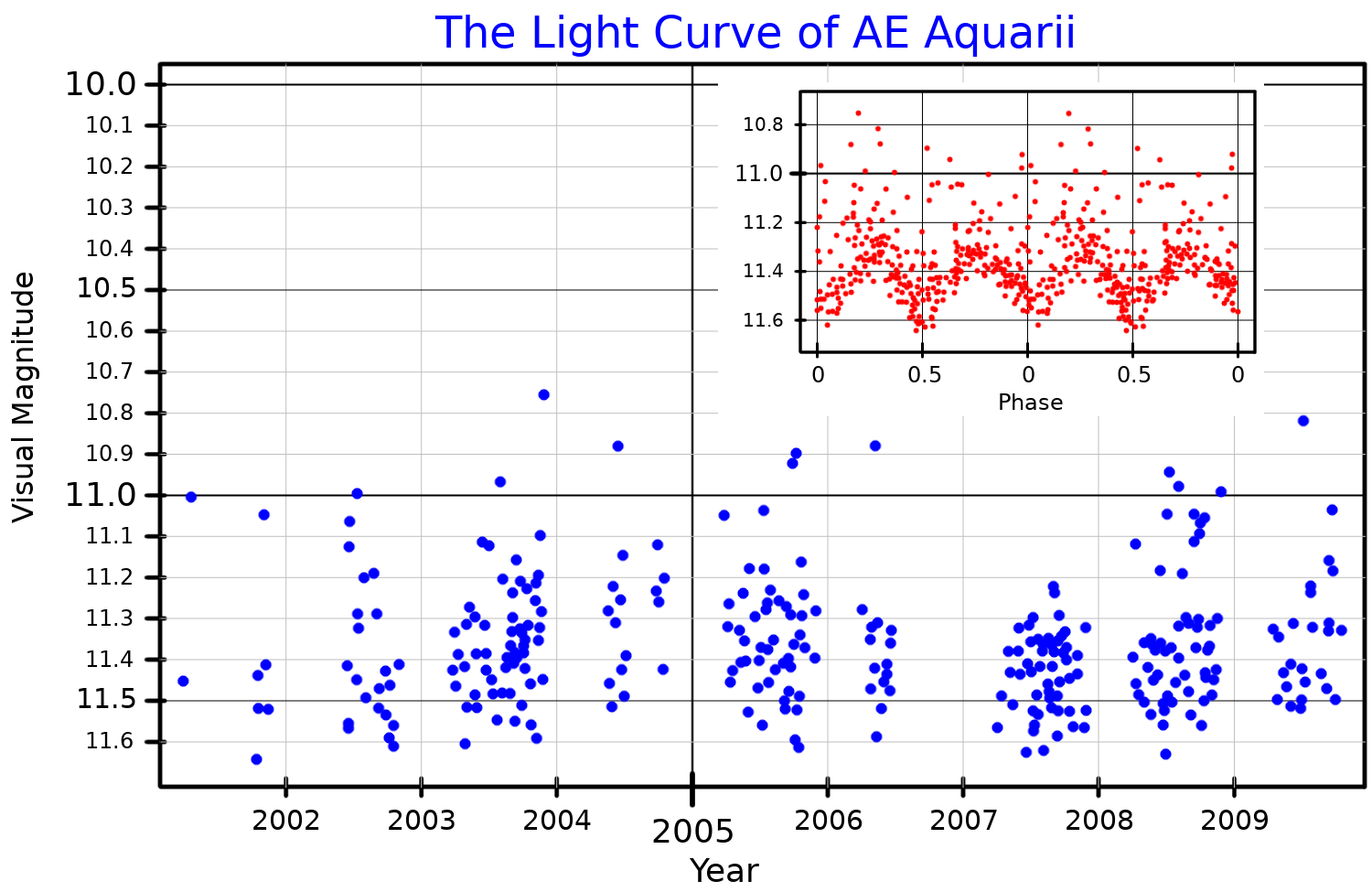AE Aquarii on:
[Wikipedia]
[Google]
[Amazon]
AE Aquarii is a  The AE Aquarii system consisting of an ordinary star in a close orbit around a magnetic
The AE Aquarii system consisting of an ordinary star in a close orbit around a magnetic
Image AE Aquarii
*
{{DEFAULTSORT:AE Aquarii Aquarius (constellation) Intermediate polars 101991 Astronomical X-ray sources Aquarii, AE White dwarfs K-type main-sequence stars
cataclysmic variable
In astronomy, cataclysmic variable stars (CVs) are stars which irregularly increase in brightness by a large factor, then drop back down to a quiescent state. They were initially called novae (), since ones with an outburst brightness visible to ...
binary star
A binary star is a system of two stars that are gravitationally bound to and in orbit around each other. Binary stars in the night sky that are seen as a single object to the naked eye are often resolved using a telescope as separate stars, in wh ...
of the DQ Herculis
DQ Herculis, or Nova Herculis 1934, was a slow, bright nova occurring in the northern constellation of Hercules in December 1934. This cataclysmic variable star was discovered on 13 December 1934 by J. P. M. Prentice from Stowmarket, ...
type. Based upon parallax
Parallax is a displacement or difference in the apparent position of an object viewed along two different lines of sight and is measured by the angle or semi-angle of inclination between those two lines. Due to foreshortening, nearby objects ...
measurements, the system is located at a distance of about from the Earth
Earth is the third planet from the Sun and the only astronomical object known to harbor life. While large volumes of water can be found throughout the Solar System, only Earth sustains liquid surface water. About 71% of Earth's surfa ...
. Because of its unique properties, this system has been subject to a number of scientific studies. The white dwarf in the AE Aquarii system is the first star of its type known to give off pulsar-like pulsations that are powered by its rotation and particle acceleration.
 The AE Aquarii system consisting of an ordinary star in a close orbit around a magnetic
The AE Aquarii system consisting of an ordinary star in a close orbit around a magnetic white dwarf
A white dwarf is a stellar core remnant composed mostly of electron-degenerate matter. A white dwarf is very dense: its mass is comparable to the Sun's, while its volume is comparable to the Earth's. A white dwarf's faint luminosity comes fro ...
; the pair orbit each other with a period of 9.88 hours. The white dwarf primary has 63% of the Sun's mass
The solar mass () is a standard unit of mass in astronomy, equal to approximately . It is often used to indicate the masses of other stars, as well as stellar clusters, nebulae, galaxies and black holes. It is approximately equal to the mass of ...
but a radius of only about 1% of the Sun. As of 2009, it has the shortest known spin period of any white dwarf, completing a full revolution every 33.08 seconds. This spin is decreasing at a rate of 1.78 ns per year, which is unusually high. The secondary star has a stellar classification
In astronomy, stellar classification is the classification of stars based on their stellar spectrum, spectral characteristics. Electromagnetic radiation from the star is analyzed by splitting it with a Prism (optics), prism or diffraction grati ...
of K4-5 V, making it a main sequence
In astronomy, the main sequence is a continuous and distinctive band of stars that appears on plots of stellar color versus brightness. These color-magnitude plots are known as Hertzsprung–Russell diagrams after their co-developers, Ejnar Her ...
star that is generating energy at its core through the thermonuclear fusion
Thermonuclear fusion is the process of atomic nuclei combining or “fusing” using high temperatures to drive them close enough together for this to become possible. There are two forms of thermonuclear fusion: ''uncontrolled'', in which the re ...
of hydrogen. It has about 37% of the Sun's mass but 79% of the Sun's radius.
This system displays flare activity that has been observed across multiple bands of the electromagnetic spectrum
The electromagnetic spectrum is the range of frequencies (the spectrum) of electromagnetic radiation and their respective wavelengths and photon energies.
The electromagnetic spectrum covers electromagnetic waves with frequencies ranging from ...
, including X-rays. Mass is being lost from the secondary star, most of which is being flung out of the system by the rapidly spinning magnetic primary. The X-ray luminosity is likely being caused by the accretion of mass onto the white dwarf, which is occurring at an estimated rate of about per second.
See also
*Pulsar
A pulsar (from ''pulsating radio source'') is a highly magnetized rotating neutron star that emits beams of electromagnetic radiation out of its magnetic poles. This radiation can be observed only when a beam of emission is pointing toward Ea ...
* X-ray pulsar
X-ray pulsars or accretion-powered pulsars are a class of astronomical objects that are X-ray sources displaying strict periodic variations in X-ray intensity. The X-ray periods range from as little as a fraction of a second to as much as several m ...
* AR Scorpii
AR Scorpii (AR Sco) is a binary pulsar that consists of a white dwarf and a red dwarf. It is located close to the ecliptic plane in the constellation Scorpius. Parallax measurements made by ''Gaia'' put the system at a distance of abou ...
− another white dwarf pulsar
References
External links
Image AE Aquarii
*
{{DEFAULTSORT:AE Aquarii Aquarius (constellation) Intermediate polars 101991 Astronomical X-ray sources Aquarii, AE White dwarfs K-type main-sequence stars